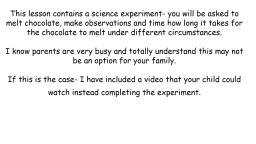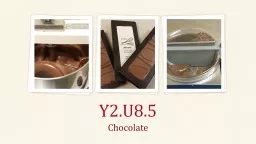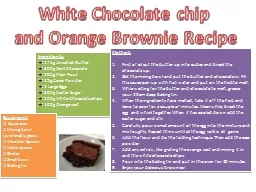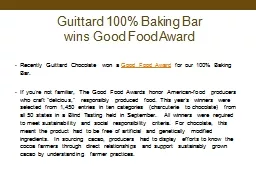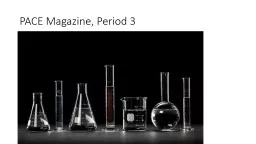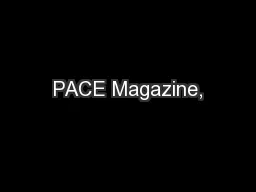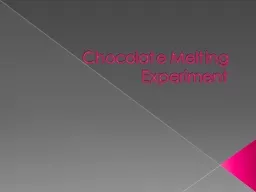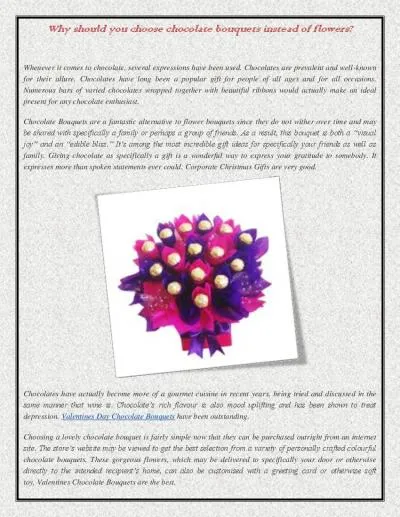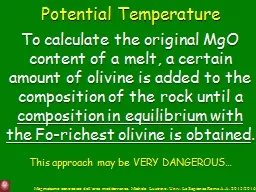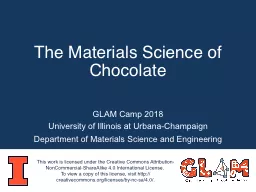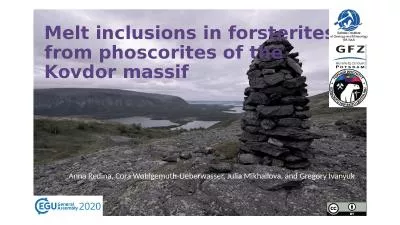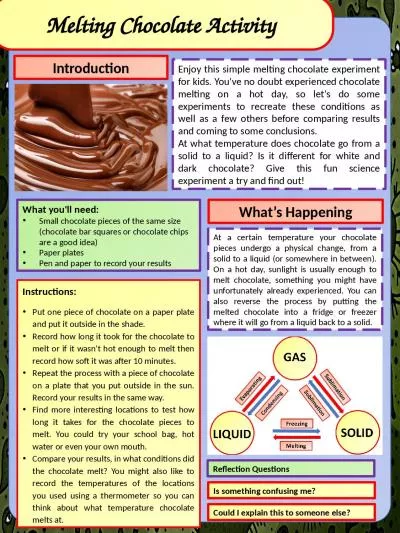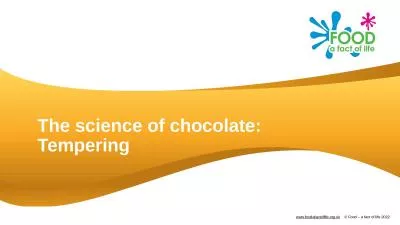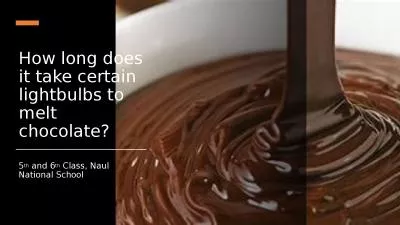PPT-This lesson contains a science experiment- you will be asked to melt chocolate, make observations
Author : susan2 | Published Date : 2024-01-29
I know parents are very busy and totally understand this may not be an option for your family If this is the case I have included a video that your child could watch
Presentation Embed Code
Download Presentation
Download Presentation The PPT/PDF document "This lesson contains a science experimen..." is the property of its rightful owner. Permission is granted to download and print the materials on this website for personal, non-commercial use only, and to display it on your personal computer provided you do not modify the materials and that you retain all copyright notices contained in the materials. By downloading content from our website, you accept the terms of this agreement.
This lesson contains a science experiment- you will be asked to melt chocolate, make observations: Transcript
Download Rules Of Document
"This lesson contains a science experiment- you will be asked to melt chocolate, make observations"The content belongs to its owner. You may download and print it for personal use, without modification, and keep all copyright notices. By downloading, you agree to these terms.
Related Documents

